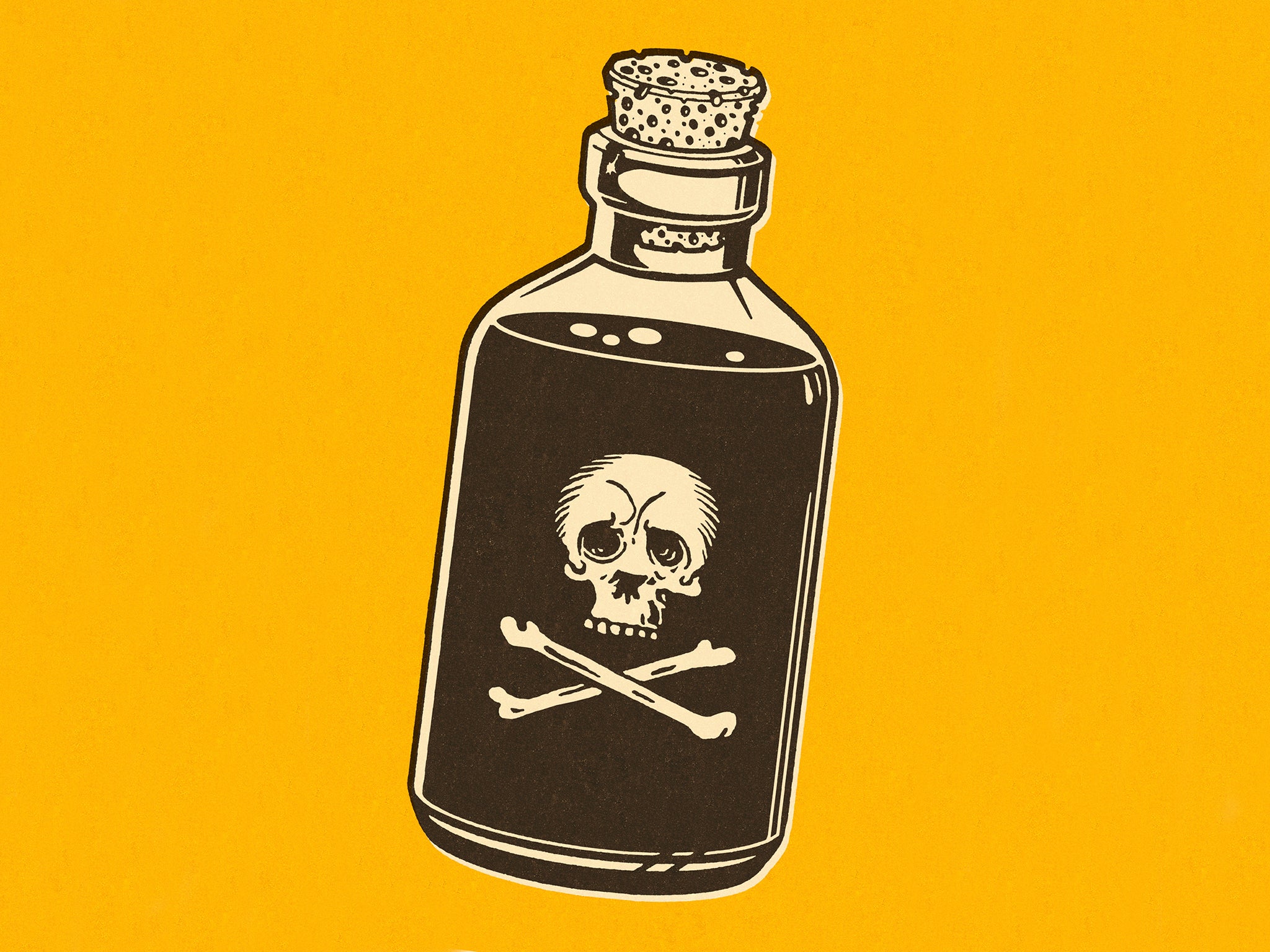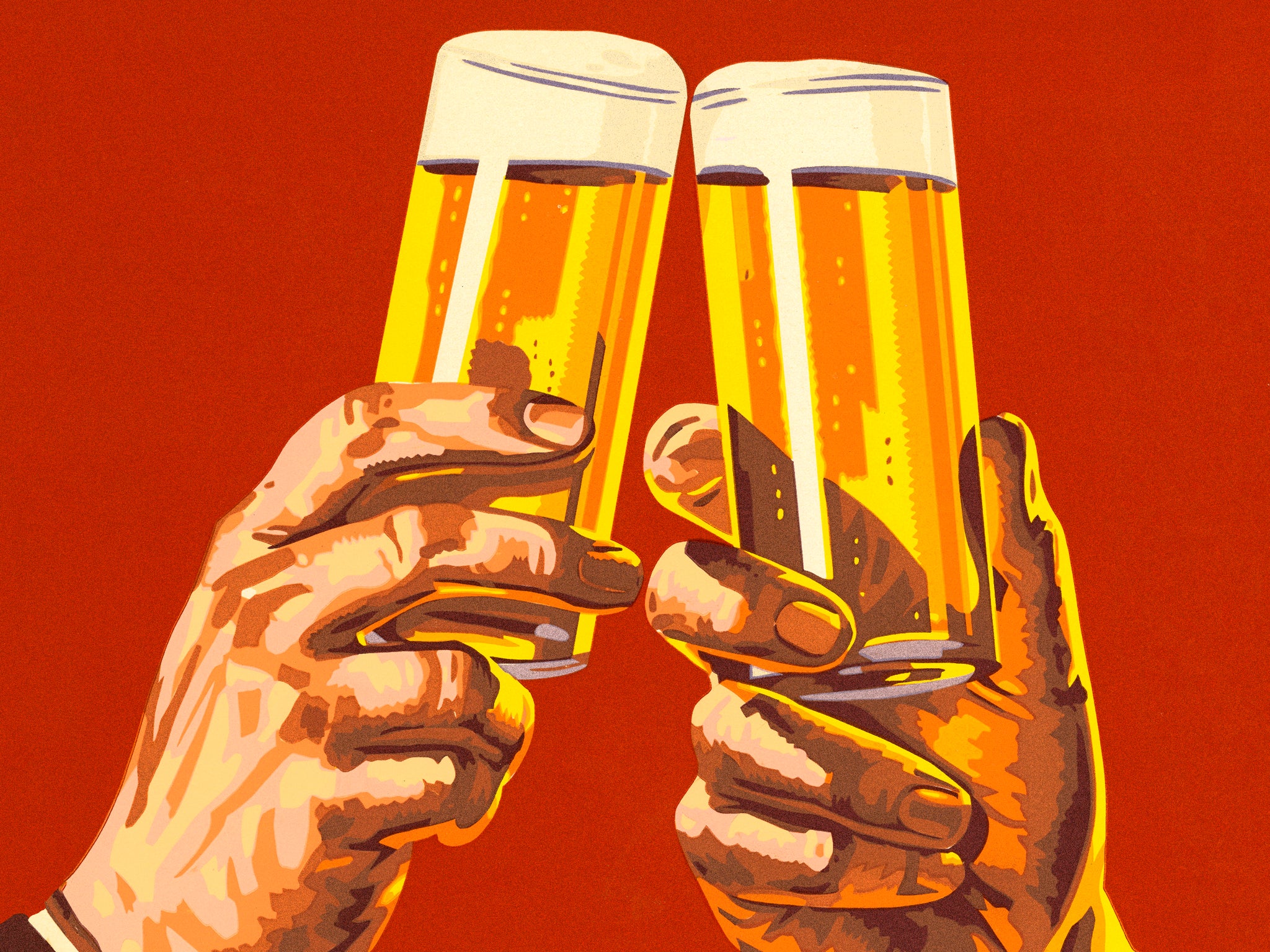It’s time for booze bottles to have health warning labels
Is alcohol about to have its cigarette moment in terms of its public image? As Ireland vows to introduce health warnings to alcohol labels, Matthew Neale explores why our relationship with drink should be less blasé

The year is 1966, and mandatory health warning labels have just been added to cigarette packs in the US. Blunt wording that stands in contrast to the colourful, cartoonish marketing of Joe Camel and the Marlboro Man proclaims the risks of various dire health conditions caused by smoking, including the direct link with lung cancer. In the decades that follow, the tobacco industry fights the most effective efforts to curb smoking, successfully delaying today’s visually graphic health warning labels (GHWL) internationally for nearly 10 years.
The temptation today is to look back at these battles as tales of a bygone era, an age when Mad Men’s Don Draper stalked the earth and scientific research was struggling to catch up with our habits. You might be surprised, then, to learn that Ireland’s recent decision to introduce mandatory health warnings to alcohol labels from 2026 – specifically linking alcohol and liver disease – were quickly decried as “totally inappropriate” by the country’s Italian ambassador, concerned about the potential impact on wine exports. If you thought we’d moved into an enlightened era in which everyone accepts the latest science, regardless of financial interests, you’d be sadly mistaken.
While the risks are by no means identical, there is a growing sense – in PR terms – that alcohol is on the cusp of having its cigarette moment. Alcoholism remains a huge concern, of course. In May alone, Simon Pegg, Liam Payne, Drew Barrymore and Macklemore all spoke about why they felt they had to quit the booze for good. But even among those who may not consider themselves to be problem drinkers, the landscape is changing. The myth that a daily glass of wine is good for you has been thoroughly debunked. The World Health Organisation now tells us that, while following so-called “low-risk drinking guidelines” (ie less than 14 units per week) is better than binge-drinking, there is simply “no level of alcohol consumption [that] is safe for our health,” and the message is spreading.
But are health warnings on bottles and cans likely to be effective? Despite drawing some cynicism when they were introduced to the UK in 1971, the move has been dubbed a “global success” with cigarettes: in a 2008 study, approximately 70 per cent of participants reported that warning images had a high level of influence on their decision to stop smoking. Dr Richard Piper, the chief executive of Alcohol Change UK, said his organisation welcomed the decision, citing alcohol as a “major cause” of serious health conditions such as diabetes, stroke, cancer and high blood pressure.
“As consumers, we have the right to know what’s in our drinks,” Dr Piper told The Independent in a statement. “It’s time for the UK government to step in and tighten the regulation around alcohol labelling to ensure the low-risk drinking guidelines are clearly shown on the labels of alcoholic drinks, along with nutritional information, including calories, ingredients, the units per serving, and the risks of consuming alcohol. This would support us all to make healthier choices about our drinking.”
Part of the problem is that we simply do not treat alcohol as the dangerous substance that it is; if a new drug that caused such powerful nausea, headaches, memory loss, black-outs and vomiting became popular everywhere, from festivals to family homes, the moral panic generated would be enough to keep tabloid columnists in a frenzy for years. That’s before you consider the staggering amount of serious crime that is connected to alcohol abuse in some way: in the US, around 40 per cent of inmates who are jailed for violent offenses were under the influence of alcohol when their crime was committed.
Pip Clark, a 29-year-old LGBT community organiser from Bristol, tells a familiar story of drinking in all the socially acceptable ways as a teenager and into their early twenties: out clubbing with friends once a weekend, then twice or three times a week, then drinking at home and struggling to keep it to just one or two. They celebrated three years of sobriety at the end of May, having made the decision when lockdown removed the option of social drinking, but believe that alcohol’s all-pervasive grip on our free time remains a huge problem.
I don’t believe that everyone should be abstinent, but I do think there is great value in informed consent. Most people are unaware of the dangers of alcohol consumption, especially on a regular basis
“As a culture, we turn to alcohol to celebrate, commiserate, socialise, pass time, and it’s found at the majority of social gatherings you attend as an adult. This happens so much that when I say I don’t drink, many actually find this strange and question me on my choices,” they explain. “It can also be very alienating if you’re one of the people not drinking for whatever reason.”
While Pip welcomes the introduction of health warnings, they’re keen to stress that it needs to be part of wider, structural change, citing some US states’ restriction on open public drinking, and advocates for a wider selection of non-alcoholic options in venues. “Everywhere I go, I end up basically with the options of cola or lemonade, maybe an orange juice if I’m lucky,” they add. “If there were better soft drink options, maybe more people would reach for those instead of immediately going for an alcoholic beverage.”
The desire for social change is a common thread in the people I speak to with first-hand experience of addiction. For writer and campaigner Sam Thomas, alcohol didn’t really enter his life until he was 22, after hating the taste as a teenager. After the death of his mother a year later, the nightly bottles of wine began to increase – until by the age of 30 his attempts to stop caused severe alcohol withdrawal symptoms. Following his fourth detox in November 2019, Sam was finally able to embrace recovery.
Now happily sober at 37, he wants the public to change the way they think about intoxication. “It’s often overlooked that alcohol and cigarettes are the most dangerous drugs of all,” he tells me. “People naively believe that because they are legal, they are not as harmful as class A substances. In my experience, I learned how easy it was to go from teetotal to severely alcohol dependent in just a few short years.”
Fear of death at that time was profound, whether from withdrawal or alcohol poisoning following a potential relapse. Sam believes the move to signpost the public to these dangers is long overdue. “Alcohol addiction is a truly wicked illness,” he says. “We desperately need warning labels on alcoholic beverages to educate the public about the risks and deter them from regular binge drinking.”

The value of warning problem drinkers about the paths to addiction and ill health are vital, but it’s also vital to make sure those already affected know that support is available. Ashley Loeb Blassingame is a California-based drug and alcohol counsellor, podcaster, and founder of the first entirely online outpatient substance use disorder treatment programme. Having abused alcohol and heroin as a teenager, she found herself in recovery and getting sober at the young age of 19 – and after 17 years sober since then, she believes the warning labels are a “great start” on a longer journey to changing attitudes.
“I don’t believe that everyone should be abstinent, but I do think there is great value in informed consent,” she says. “Most people are unaware of the dangers of alcohol consumption, especially on a regular basis,” she says. “Labelling alcohol will simply be bringing it up to the same standards as all other food, beverages, and tobacco.”
Ashley met her husband in recovery, and he has also been sober since then. Both her podcast and recovery programme, Lionrock Recovery, focus on uplifting those who are struggling with alcohol addiction, and how often we underestimate its dangers. “Alcohol kills more people than all other drugs combined,” she reminds me. “It’s important that people have the right information about the risks they are taking with their bodies and health.”
Warning labels probably won’t prompt millions of lifelong drinkers to quit. It’s also simply not that easy for a lot of people; personally speaking, I still drink and smoke far more than I’d like, in spite of being well aware of the risks laid out here. But as Gen Z continues to lose interest in alcohol, it feels like the wind may be changing direction. Just as Don Draper’s beloved Lucky Strike has become a sepia-tinted anachronism, the Old Fashioned cradled in his other hand may be the next to fall out of fashion.






Join our commenting forum
Join thought-provoking conversations, follow other Independent readers and see their replies
Comments